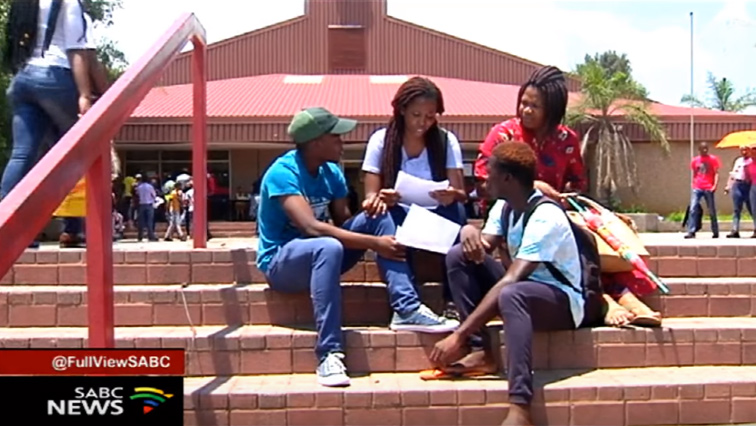As part of PanSALB’s new language awareness campaign, the month of August has been chosen for the celebration of English. It’s a time to reflect on its fascinating history as well as on the ways in which the language touches and enriches our lives.
But it also give us an opportunity to think about the ways in which English as an academic lingua franca, unfortunately, remains a stumbling block for many South African students. My aim isn’t to criticise the use of English as an academic lingua franca, but rather to explore some of the reasons why this stumbling block exists and to provide some insight into the remedial measures that help students bridge the gap between secondary and tertiary education.
The Gap
For better or for worse, English is the primary Language of Learning and Teaching (LoLT) at many South African Higher Education (HE) institutions. It’s the academic lingua franca despite the fact that less than 10% of the national population use it as their mother-tongue.
The continued dominance of English is not an uncontroversial topic, however, and tensions remain between ‘policy planners, language practitioners, higher education managers, academic staff, and students’.
It’s well known that a gap exists between secondary and tertiary education. There are primarily two reasons for this gap. The first is that for many South African students, English is a second, third or sometimes even fourth language.
This means that when entering tertiary education, students must study in a language that is not their mother tongue. This has been cited as one of the primary reasons for poor performance at university. According to the Council of Higher Education, a lacking proficiency in English remains a ‘significant barrier to success’ and must be addressed in a ‘systematic and sustained manner’.
Indeed, recent research at the University of the Free State shows that out of eight critical risk factors for underperformance at university, two pertain to performance in English Language. These are: performance in Grade 12 English mark (home, second or additional), and performance on the Academic Literacy portion of the National Benchmark Test.
The second cause of the gap between secondary and tertiary education is due to low levels of academic literacy. The literacy levels of many South African students entering into higher education are below expected standards, which sadly means that many students are underprepared for tertiary education.
Bridging the Gap
The good news is that support for these students comes in many forms: extended degree programmes, writing support centres, language and literacy courses, and academic advising are just four such interventions. Literacy and language support takes place under the umbrella of English for Academic Purposes (EAP), the aim of which is to prepare students for academic study in English.
What is important to note about academic language and literacy development, however, is that it takes time. Studies show that students need between 4 – 7 years to become fully proficient.
I highlight this because there is a common misconception that proficiency in spoken English equals proficiency in academic English. And the shift from secondary education to higher education is not something with which only second language learners struggle. Even first language English speakers struggle to make the jump.
In his research on language acquisition, Dr Jim Cummins distinguishes between Basic Interpersonal Communicative Skills (BICS) and Cognitive Academic Language Proficiency (CALP). Essentially, BICS is conversational proficiency and CALP is academic proficiency.
Although this distinction is not without its fair share of criticism and controversy, it is a useful distinction when considering that these constructs speak to differing levels of proficiency and do not ‘…reflect just one unitary dimension’. In other words, students may be fully proficient in the ‘core grammar’ of a language and many of its ‘sociolinguistic rules’, but, even so, will need to spend much more time (12 years or so in school) attempting ‘…to extend this basic linguistic repertoire into more specialised domains and functions of language’.
This ‘specialised domain’, i.e. academic proficiency in English, is what many academic language and literacy support units at South African universities (and universities all over the world) are concerned with. Ultimately, CALP is more cognitively demanding, is context-reduced, and is more complex to acquire. To train students in both CALP and even BICS is no easy feat; it takes time and effort. But it is of the utmost importance when we consider what a difference it can have in students’ lives.
But what exactly do we mean when we talk about academic literacy? According to Cummins, academic language proficiency is ‘…the extent to which an individual has access to and command of the oral and written academic registers of schooling’.
A widely used construct of academic literacy comes from scholars Rebecca Patterson and Albert Weideman, who state that academic literacy has to do with ‘…the flow between speaking, careful listening and note-taking, effective reading, sound critical thinking, forming and discussing opinions, and good processing of arguments (usually and eventually in writing)…’.
Ultimately, academic literacy can be described as the ability to, ‘think critically’, ‘distinguish between essential and non-essential information’, ‘synthesise and integrate information from a multiplicity of sources…’, ‘understand relations between different parts of a text’, ‘be aware of the logical development and organisation of an academic text’, and ‘write in an authoritative manner’.
All of these are vastly complex skills which take years to master. And the acquisition of these skills becomes even more complex when having to master them in another language. – By Michelle Joubert






